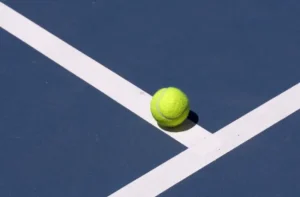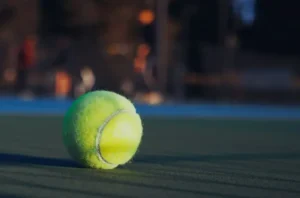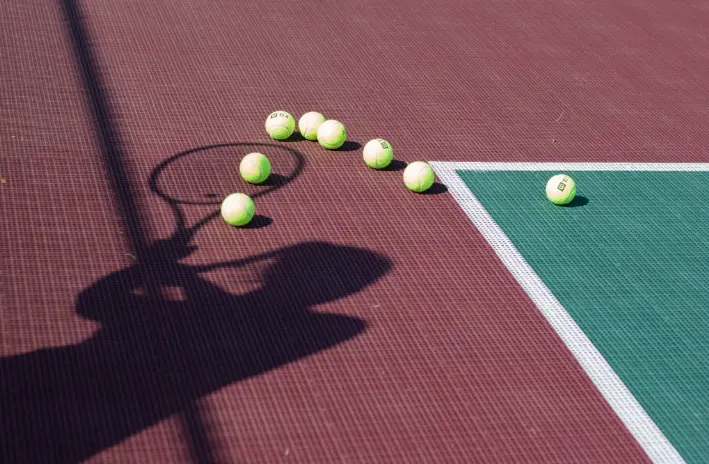What are table tennis balls made of?
Miniature ping-pong balls are considered as essentially plastic. On the outside, these boccie balls appear to be a simple and unimportant addition to the game, but they actually carry an interesting background of their own and many things are expressed through their hidden meanings.
In the following article, we will investigate the materials that are employed for the production of jelly which are a crucial thing for the match, yet their shapes and materials have changed through the years for the better. Specifically, technology demands that we follow these changes as synthetic rubber and celluloid are non-biodegradable materials and, therefore, cannot be used.
History of Table Tennis Balls
Early Designs
In the initiation of table tennis, some players did not have a ball, so they made the ball with champagne corks and rubber balls. It was after 19 in the 300s when the table croquet ball begins to get a definite look and this was through the use of celluloid material which was the influential factor in its time.
Evolution of Materials
The table tennis balls have been going through changes in terms of the material and dimensions over the years and the early ones were not the same as those of today in terms of the materials used, size, and weight. Production of a ball having balded that is controlled, and which is consistence in the bounce time pushed the manufacturers to experiment with different combinations until they came to the conclusion of using more sophisticated elements.
Modern Table Tennis Ball Composition
Material Used in Modern Balls
Today’s table tennis balls are made primarily of a plastic known as acrylonitrile butadiene styrene (ABS) or similar poly material. These are non-flammable and safer than older celluloid models, making them the standard for competitive play.

Size and Weight Specifications
Contemporary balls are 40 mm in diameter and weigh 2.7 grams or, to be precise, are the properties of balls according to the International Table Tennis Federation (ITTF). This common measurement allows players to participate in all competitions worldwide without the need to adjust from ball to ball.
Why Were Celluloid Balls Used Initially?
Properties of Celluloid
Celluloid was the first material used for table tennis balls, primarily due to its lightweight and good bounce properties. It was widely available and easy to shape, making it ideal for the fast-paced nature of the game.
Challenges with Celluloid
Despite its popularity, celluloid presented significant issues. It is highly flammable, and its fragility meant balls could break easily during intense games. Moreover, producing celluloid came with environmental concerns, leading to the search for safer alternatives.
Transition from Celluloid to Poly Balls
What Are Poly Balls?
Poly balls, also known as plastic balls, are the modern options for cellulose. These are made from natural products like polystyrene (ABS) and are more flexible and recyclable friendly.
Why the Shift from Celluloid to Poly?
The switch occurred around 2014 when ITTF phased out celluloid due to safety hazards and manufacturing limitations. Poly balls, although slightly different in their bounce and spin behavior, are considered a safer and more sustainable option.
How Are Poly Balls Made?
Manufacturing Process Overview
Poly balls are made by blending two parts of plastic material using a process that’s called thermal bonding. The two parts are joined together, creating a full sphere. This process made sure that the ball is even and has a natural shape.
Environmental Impact of Poly Balls
If compared to the use of celluloid, the creation of poly balls is less destructive to the natural environment. As well, poly balls are more recyclable, cut down the number of alternatives and reduce down on waste.
Differences Between Celluloid and Poly Balls
Performance Differences
Players often notice subtle differences between celluloid and poly balls in terms of speed and spin. Poly balls tend to be a little slower, but they offer more control in spin, making rallies more competitive.
Durability and Safety Factors
Poly balls are significantly more durable and safer than their celluloid counterparts. They are less prone to cracking and can withstand more intense play, making them ideal for modern table tennis competitions.
Table Tennis Ball Standards and Regulations
ITTF Guidelines
The ITTF rules stipulate that balls used in the official Olympics must be chosen based on their size, weight, tone, and bounce quality. Only designated balls can be used in formal ball matches.
Approved Manufacturers
Only specific brands are authorized to manufacture table tennis balls for official events. Some major brands consist of DHS, Butterfly, and Nittaku.
Common Issues with Table Tennis Balls
Breaking and Cracking
Despite improvements, table tennis balls can still crack or break under heavy impact. Players should always keep spare balls handy during practice or matches.
Handling and Storage
Table tennis balls are intensely reactive to extreme heat and humidity change. Always hang them in a cool, dry place to make sure that they still keep their structure and movement.
The Future of Table Tennis Balls
Eco-Friendly Choices
As the world grows more sustainability informed, table tennis ball production companies are looking for even more natural materials. Innovations like biodegradable plastics could become the next mainstream.
Technological Advances
In relation to climate change, technological improvements may lead to balls with improvements in hardness and performance features, to make the game even more rewarding.
Why the Material of the Ball Matters in Gameplay
Impact on Speed
The material of the ball directly affects its speed. For instance, poly balls are slightly slower than celluloid balls, but they allow for more control and precision.
Bounce and Spin Effects
A ball’s material also influences its bounce and spin potential. Poly balls provide a more controlled bounce, which can benefit players who rely on spin-heavy techniques.

How to Choose the Right Table Tennis Ball
Training Balls vs. Competition Balls
When choosing balls, consider whether you need them for training or competition. Training balls tend to be lower in quality, while competition balls are more precisely manufactured.
Star Rating System
Most table tennis balls are classed from 1-star to 3-star, with 3-star of the highest level of quality, used in official games.
Caring for Your Table Tennis Balls
Proper Storage
Always keep your balls in a dry, room-temperature environment to avoid warping or damage.
Maintenance Tips
Inspect your balls regularly for cracks or damage. Replacing damaged balls ensures consistency during play.
Fun Facts About Table Tennis Balls
Why They’re White or Orange
Table tennis balls are either white or orange to provide better visibility during play, depending on the background color of the playing environment.
Unique Table Tennis Ball Records
Do you know that the longest table tennis rally lasted for over 8 hours ? Table tennis balls have been part of some fascinating records!
Conclusion
The production of table tennis balls has moved on from their mucky childhood into a significantly trendy item of sport. If you are a casual player or a seasoned one, knowing what table tennis balls are made of can improve both your game and liking for the game.
FAQs
- What is the most common material used for table tennis balls today?
Poly balls made from ABS plastic are the most common. - Why were celluloid balls replaced?
Celluloid balls were replaced due to their flammability and environmental concerns. - Are poly balls slower than celluloid balls?
Yes, poly balls are slightly slower but offer more control. - Can I use training balls in competitions?
No, competition balls are of higher quality and have stricter standards. - How should I store my table tennis balls?
Store them in a cool, dry place to maintain their quality.
Difference Table of the Article
| Feature | Celluloid Balls | Poly (ABS) Balls |
|---|---|---|
| Material | Made from celluloid, a highly flammable substance | Made from acrylonitrile butadiene styrene (ABS), a safer plastic |
| Flammability | Highly flammable, presents safety hazards | Non-flammable, safer for players and manufacturers |
| Durability | Fragile, prone to cracking during intense play | More durable, resistant to cracking, ideal for competitive play |
| Bounce and Spin | Faster with slightly less control in spin | Slower with more controlled bounce and spin, ideal for precision |
| Environmental Impact | Difficult to recycle, harmful to the environment | More recyclable, eco-friendlier than celluloid |
| Production Year | Used from early table tennis days until around 2014 | Introduced after 2014, as an alternative to celluloid |
| Weight and Size | 38 mm diameter, 2.5 grams | 40 mm diameter, 2.7 grams, standard ITTF size |
| Cost | Generally cheaper | Slightly more expensive due to modern manufacturing |
| Usage | Used primarily in the early years of table tennis | Now the standard for official play, including ITTF events |
| Safety Concerns | Fire hazards, breakage risks during intense play | Safer for players and less risky in terms of accidents |
